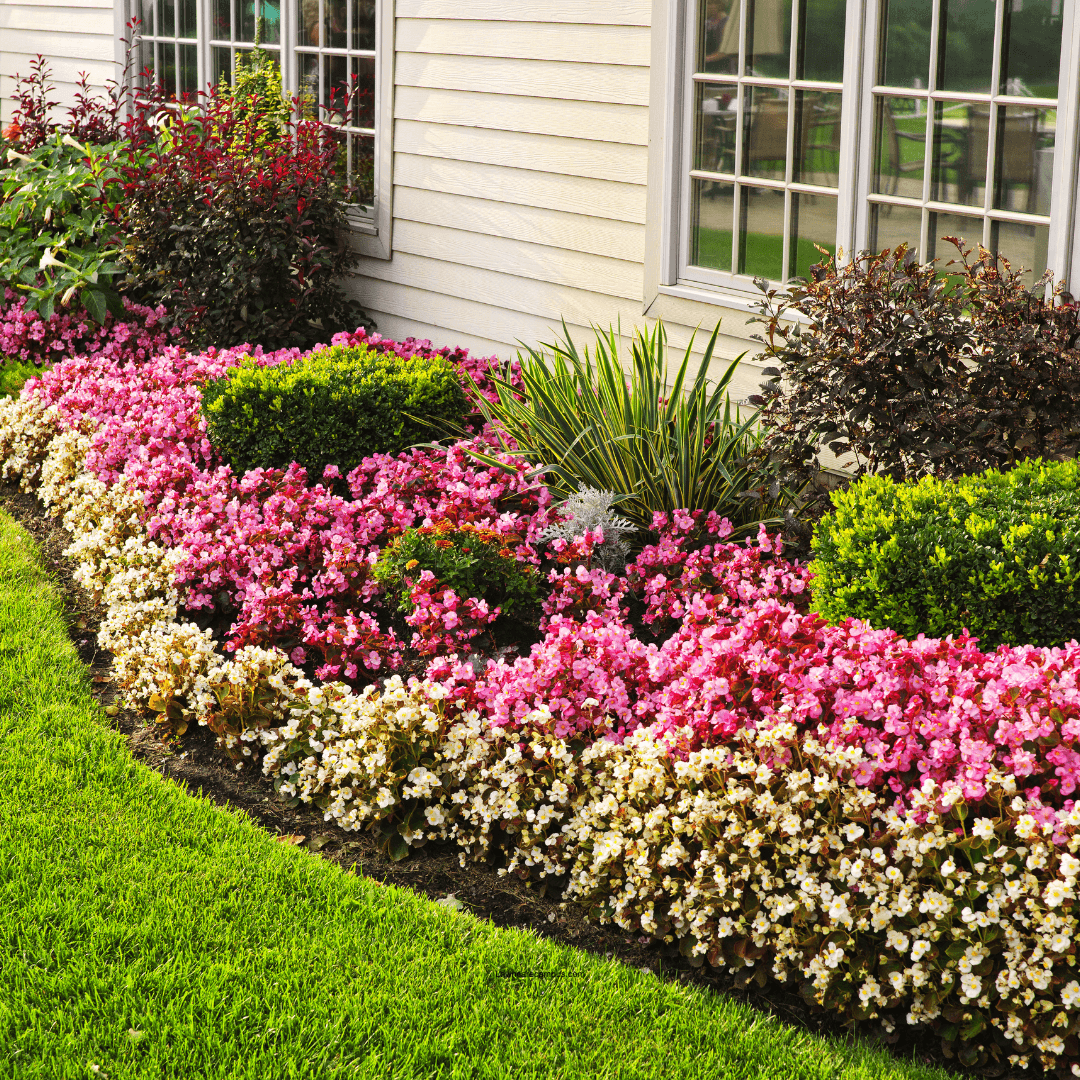Deeroscaping or deer resistant landscaping is deer resistant landscape design with the goal of avoiding deer damage. First consider the goal of your ultimate landscape as if deer were not an issue. Is it beauty, hedging to block a neighbor or street, or an edible landscape? Do you prefer flowers or shrubs? The goal of your landscape won't change when designing for deer. Neither, hopefully will the overall look.
Rules of Deer Resistant Landscaping
1. Choose deer resistant alternatives as much as possible. Categorize the plants you need by form, function, color, and size. There are several charts of rarely damaged plants to use to substitute plants of similar size, flower color, growth habit, etc.
2. Determine the main entryway of deer and make it as discouraging as possible. Position plants that are poisonous to deer or at least plants on the rarely damaged list. If you have to use plants that are occasionally damaged, then keep the plants sprayed with repellent. Deer are creatures of habit. Find their path that they have been using when entering your landscape and make sure it is not appealing to the deer.
3. Plant deer resistant plants around the outside edges of the landscape. This may be enough to discourage deer from coming in further to find your more susceptible plants on the interior.
4.Use deer repelling shrubs and flowers in combination with susceptible plants. If the odor of the repellent plants is stronger than that of the susceptible plants, the deer won't find the plants you are trying to disguise.
5.Hide susceptible plants from the deer. Deer won't go were they can't see past or see over. Plant border hedges or large plants to hide smaller susceptible plants under larger deer resistant trees and shrubs.
6.Keep border grasses cut down and keep edibles picked up. If there is tall grass, the deer are encouraged to make beds. If fruit, nuts, or unharvested vegetables are left on the ground, the deer will find it hard to resist entering the landscape.
7. Use unobtrusive electronic deer control, or other deterrents such as repellents as needed. Devices such as Wireless Deer Fence can be placed inconspicuously around the landscape to train deer not to enter.
8. Determine the deer density in your area if possible. We have a page with deer density per state. You will need to check with your county to find the information for your local county.
Comments
We used to have deer and now don't since we planted herbs around and in the middle of the garden. I have Thyme, Oregano, Basil, Lemon balm, Sage, Parlsey and Garlic Chives. Knock on wood, no deeer in 3 yrs! Yet, my neighbor is being invaded by them and they are devouring her garden. she also has a problem with Woodchucks. We don't.
I did it too- Plus...
by: Anonymous
After feeding the deer the first year I had my garden and being totally frustrated, I recognized that they left my lavender and bleeding hearts alone as well as the the thyme and oregano. They also don't seem to like zinnias. So I have a row of lavender on one side, an herb garden, lavender beside most of my roses, basil by my tomatoes, and marigolds sprinkled throughout. AND I added four heat/motion sprinklers (two Scarecrow sprinklers and two Havahart).
On one side of the property, though, I don't have any lavender and since I hadn't been having any problems, hadn't been putting out the sprinklers. Well, the sprinklers are out now after the deer dined on my Agatha Christie, Jacob's Robe, and Flutterby roses and helped themselves to a generous feast of green beans leaves and pansies. The sprinklers are now out every night and I'll be adding the lavender this week.
Rosemary
by: Anonymous
I have not seen any mention of Rosemary in this website. I have been told that not only will deer NOT eat Rosemary, they don't even like being around it. It that's true, I would think you should mention it and include it in one of your lists.
From the webmaster: Thanks. I will double check the list of plants for food and herb gardens and get it added if it is on the research lists.
Herb Fence!
by: Artistic Endeavor
Thanks for a great idea. I noticed last year that they didn't seem to want my herbs as well as leaving the lavender. I was going to surround the garden with lavender but I'll do your herb idea too.
Thanks for sharing
by: Anonymous
This is a good strategy. Keep the plants they want in the middle and the repelling plants on the outside.
Giant Rodentsby Gwyn
(Priest River, Idaho, USA)
by Brenda
(Santa Cruz Mountains, CA)
I once propagated about 200 Hydrangeas in my open back yard. Scattered around the little plant was fresh horse manure. For 2 years the deer stayed away. No fencing, spraying, or chemicals needed.
We have 3 large apple tree that are filled with apple this year and we shake it and the deer have a great meal. We have a garden and no deer have gone near it and I wonder why? People do not have patient and start calling deer nuisance when all you need are fences and other other stuff that deer wants to eat like apple or put a cute funnel with food closer to the forest and let them eat. You don't want the deer to eat too close together so keep a little pile separated to prevent wildlife disease because hunters will put deer supplement in one pile which brings nose to nose contact that spreads the disease which is not right.
by JM
(Midwest, MO)
glass door, smelling rooting and in the newly planted Rosemary and Basil. They dismissed both pots of the herbs and proceeded to munch on new Hosta shoots in the mulch bed. I'm going to invite "Herb" over more often..haha
(Loveland, Oh)
I found it helped to have two fences around the garden. I read deer don't like to feel trapped and are deterred by two fences. I ran the horse white flat tape fence on the outside and strung it on the step in plastic posts. I put it at about 1' and 2 1/2'. Then about 2' from the horse tape fence I put electric fence wire on 6' regular metal posts at about 1 1/2' and 3 1/2'. That I can electrify but I didn't need to. It must have looked like a trap to the deer and they stayed out. Hope this helps someone.
(Wash, DC)
Deer will eat almost anything if they are hungry enough.
I've witnessed them eat Azaleas, Aucuba, and Nandina.
In our vegetable garden, they eat tomato leaves, potato leaves, and entire cucumber plants.
When I lived in the country, this is what I did, and it worked well.
The best way to protect your garden, if you have enough space, is to get a chain link fence, make it taught, then lay it on the ground around the perimeter of your garden.
Deer will not walk across it. Their hooves get stuck in the holes. They will not jump, because they will not see a vertical fence.
You just have to make sure that the chain link fence stays taught. You do this by securing poles around the chain link. And you makes sure that the fence does not sink into the ground.
You could prop the thing up on bricks, so that it is a couple inches above the ground.
Much like the things that keep cattle from walking through your driveway bib.
Now that I live in the city, we have a community garden, with 8 foot poles ans 2 inch black plastic deer netting.
(Idledale, CO)
No kind of repellents really work here at 6700' SW of Denver, foothills terrain, ideal habitat for mulies protected by private fences and government parks. We have the densest population of mountain lions anywhere for this reason. Mulies may be suffering in other parts of CO, but not here, where they are the most destructive garden raiders (after only elk)
After years of experimentation, I concluded that the only real answer is a 6-7' nylon netting perimeter. This stuff is cheap, about $1 a linear foot, and fairly easily installed as a temporary (or permanent) fence using conduit pipe and telephone wire. It provides great opportunities for climbing plants and is virtually invisible in the landscape.
Eventually I secured the perimeter, and my major failing became forgetting to close the gate. I had to shoot a rogue mulie once, which after getting a taste of my goodies, kept finding a way to get back in and refused to be afraid of me.
Today my vinyl netting has turned into a "living fence" of vines and I worry about deer a lot less. Don't waste your time with repellents - go directly to the answer.
(Central City, KY)
Sadly - Jerusalem Artichoke is NOT Deer Proof. The deer wait until the plant (which is just a sunflower) is 18-24" tall (which is when the mother tubers has expelled all its energy) and then they eat the tops off the plant, killing it before it can make new tubers. I had a milk crate full of tubers planted and the deer killed all of them. And my sunflowers. -Thank you for letting us know about the deer eating your artichokes. Usually they leave them alone but it is good (or sad) to know in some cases they will eat them. Try some of the natural repellents that could easily be washed off or sprinkle the milorganite around the plants. Milorganite will be good for plant health also.


